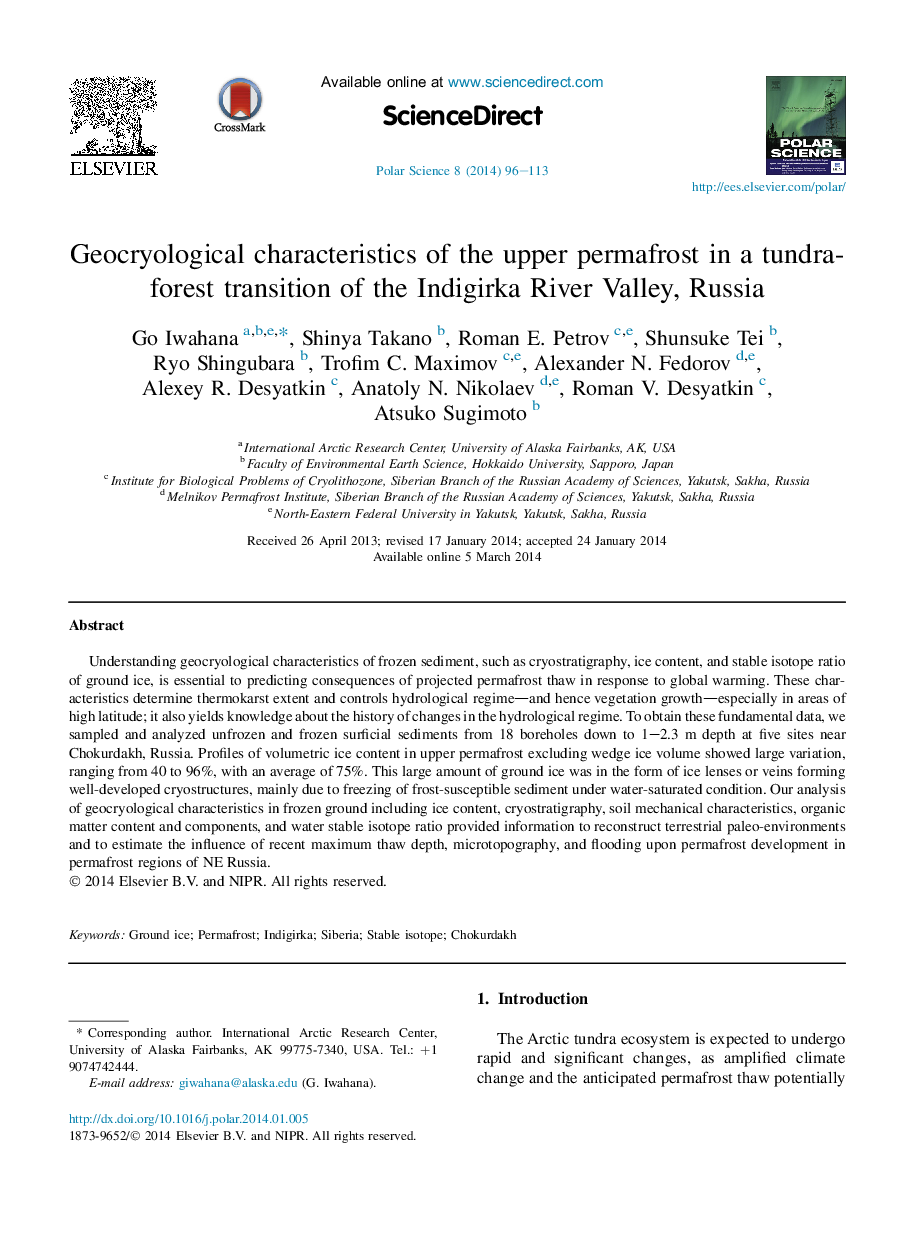| Article ID | Journal | Published Year | Pages | File Type |
|---|---|---|---|---|
| 4683201 | Polar Science | 2014 | 18 Pages |
Understanding geocryological characteristics of frozen sediment, such as cryostratigraphy, ice content, and stable isotope ratio of ground ice, is essential to predicting consequences of projected permafrost thaw in response to global warming. These characteristics determine thermokarst extent and controls hydrological regime—and hence vegetation growth—especially in areas of high latitude; it also yields knowledge about the history of changes in the hydrological regime. To obtain these fundamental data, we sampled and analyzed unfrozen and frozen surficial sediments from 18 boreholes down to 1–2.3 m depth at five sites near Chokurdakh, Russia. Profiles of volumetric ice content in upper permafrost excluding wedge ice volume showed large variation, ranging from 40 to 96%, with an average of 75%. This large amount of ground ice was in the form of ice lenses or veins forming well-developed cryostructures, mainly due to freezing of frost-susceptible sediment under water-saturated condition. Our analysis of geocryological characteristics in frozen ground including ice content, cryostratigraphy, soil mechanical characteristics, organic matter content and components, and water stable isotope ratio provided information to reconstruct terrestrial paleo-environments and to estimate the influence of recent maximum thaw depth, microtopography, and flooding upon permafrost development in permafrost regions of NE Russia.
